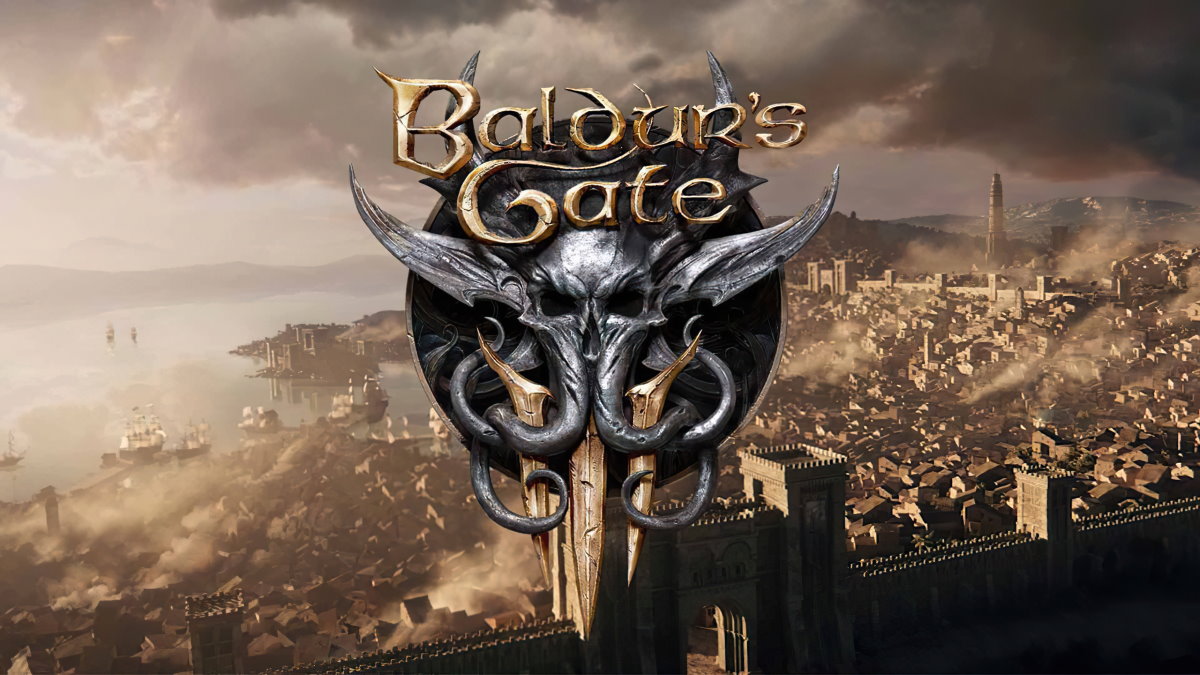
Baldur’s Gate 3 Early Access Review
Now Larian leads; bugs for everyone!
In the classic Baldur’s Gate CRPG, Minsk the barbarian proclaims “Now Minsk Leads; swords for everyone!” Baldur’s Gate 3 is still in early access, it’s expected that there will be bugs galore so this is not a dig on Larian Studios which is one of my favorite RPG developers.
What is Baldur’s Gate 3?
Baldur’s Gate is the name of a city in the Forgotten Realms, the marquee fantasy world for Dungeons & Dragons. It was the title for a much-beloved computer adaptation of Dungeons & Dragons released back in 1998 from Black Isle Studio and Interplay. It heavily inspired many RPGs that came after it, including the sequel: Baldurs Gate 2, released in 2000.
Now twenty years later Larian is making a new sequel. Larian is best known for their RPG series Divine Divinity. Those games stretch back to 2002, but it was the recent entries in the series, “Original Sin” and “Original Sin II”, that brought them wide acclaim.
The big promise of Baldur’s Gate 3 is that Larian can marry their unique and innovative take on RPGs to the beloved world and mechanics of Dungeons & Dragons to create something very special.
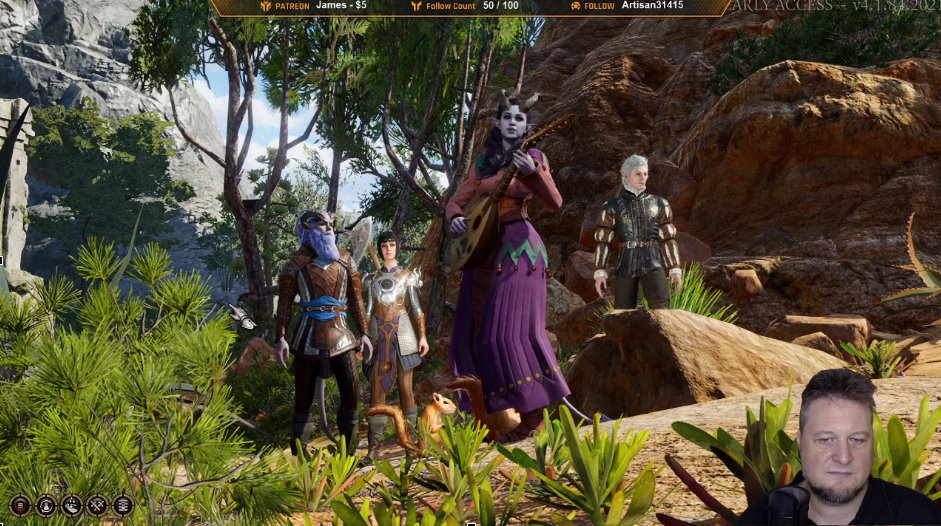
Is Baldur’s Gate 3 good?
Yes, I’m really digging it so far. Taking into account it is not a complete or polished game, I love what I see so far. This is through and through a Larian game. It is packed to the gills with rich details, eccentric characters, and role-playing opportunities while the combat is crunchy and complex.
Keep in mind, I have a habit of adoring many RPGs that others take issue with. Baldur’s Gate 3 has had its share of negative reactions in early access. and there is certainly plenty to critique, especially if you want to look at bugs and unfinished elements of the storytelling.
I’ll go into detail below, but the bottom line is I’m really happy with it and excited for when the full polished game becomes available. Honestly, I recommend waiting for the finished game unless you, like me, have a burning curiosity to see what Larian is doing in the Forgotten Realms.
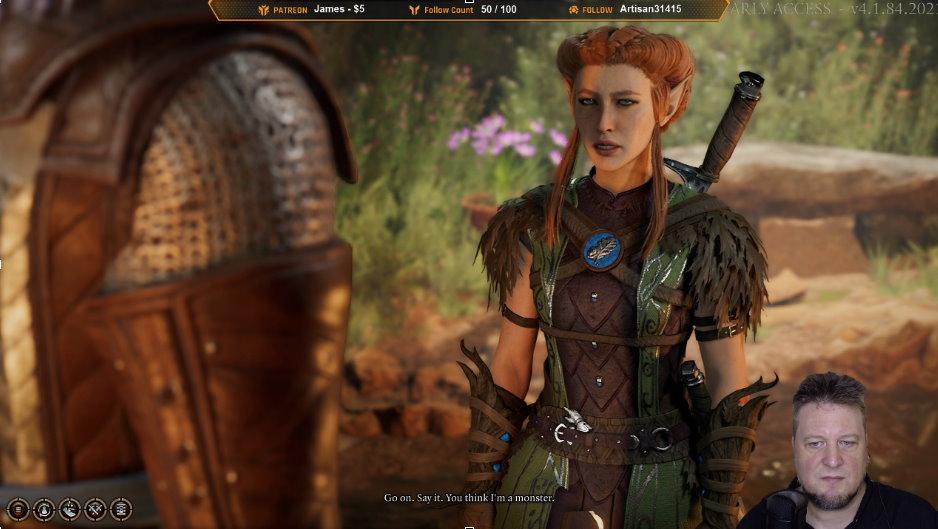
What’s in the early access release?
I think I’ve covered at least 90% of what’s available in the early access and reached its official conclusion, though I’d say with some confidence there is likely a secret or two I didn’t uncover.
You can make a character by choosing from 6 classes (Fighter, Cleric, Rogue, Wizard, Ranger, or Warlock) and 8 races (Human, Elf, Half-Elf, Drow, Dwarf, Halfling, Tiefling, and Githianki). There are some sub-races included as well, and as characters level, they can choose an archetype to further specialize your class.
There are 5 NPCs that can be recruited to your party. Each has a very distinct personality and background. In the final game, it’s possible to play as one of these characters and during the game, you can have them lead conversations if you like.
The early access consists of one large overland map, and quite a lot of smaller dungeons, encounters, and exploration areas. The more you search around, the more of these you are likely to find. After multiple playthroughs, I was still discovering new secrets.
There are multiple intertwined storylines happening during the game. The structure is very open and it’s possible to ignore quite a lot of it if you choose to. There are almost no hard “gates” stopping you from exploring freely and choosing how involved you want to be in the main quest.
There are a wide range of monsters to fight, NPCs to dialog with, and treasures to discover. Over the course of what’s available, characters quickly level up to the current maximum, level 4.
You can play Baldur’s Gate 3 solo, or with up to 3 other players. It’s even got some Twitch integrations that allow viewers to inspect your characters and help you make dialog choices.
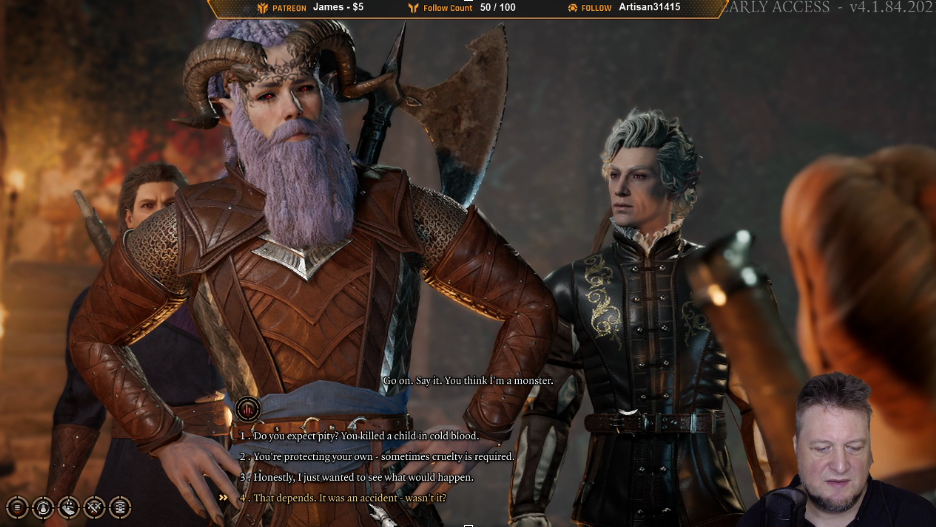
What’s great about Baldur’s Gate 3
Delicious details
At the top of my list would be the intense level of detail in the game. It really rewards taking your time to smell the roses. Experiment with moving things around in your environment. Try to get to hidden areas. Talk to everything, be it animal, vegetable, mineral, living, or dead. You never know when some story or secret adventure will be revealed to you.
Next up for me would be the level of detail in the NPCs. There are 5 party NPCs who can also be chosen as your main character if you so choose. They all have distinct personalities, interesting backstories, and some level of distrust for everyone else. Some you may like, some you may hate, but none of them are boring or stale.
The greatness of the NPCs extends to those who don’t join your party. The people in this game have depth and character to them right down to the goblins and bugbears you may chance to speak with. Never has a game put so much personality into their rank and file bad guys. It seems the Larian team decided “everyone in this world has a story.”
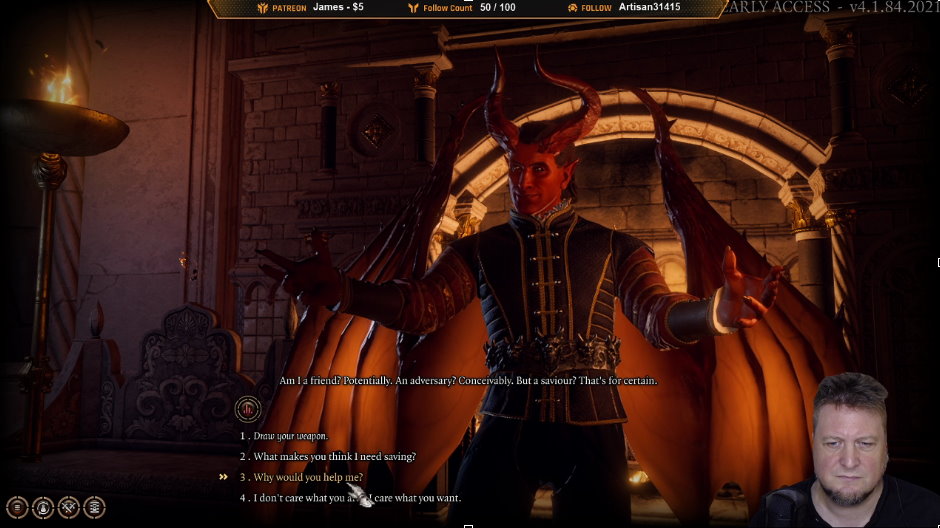
So pretty!
The graphics are gorgeous. Faces and bodies are especially well designed and animated. I just love the way characters look in this game and they express emotions very convincingly much of the time. That said, there are tons of animation glitches in the early access game. Some of these are outrageously bizarre and quite amusing.
The voice acting and other performance aspects were great, as was most of the writing. It’s fantasy and with that territory comes some over-acting and broadly written dialog, but it’s all appropriate for the game. Ultimately, there’s more depth and detail to it than you find in most fantasy RPGs.
Mechanics feel good
I enjoyed the character building and combat well enough. There is nothing revolutionary going on here, if anything it is a toned-down experience from Original Sin II. Fans of prior D&D computer games may find it a bit too wild and unbound for their tastes, while veterans of Original Sin will find it more grounded and less dynamic. Mostly it is right up my alley, both character building and play tactics had big impacts on combat outcomes.
Terrain plays a huge role in fights, sometimes overshadowing other mechanics, but for me, in a good way. Pushing a combatant off a bridge to their death is something you can do, and something that can be done to you. Taking the high ground is a high-risk/high-reward strategy here.
They did a good job staying mostly true to the D&D 5th edition rules set while keeping some of the fun, physics-based gameplay, from non-D&D Larian games. All said, there is a lot to love.
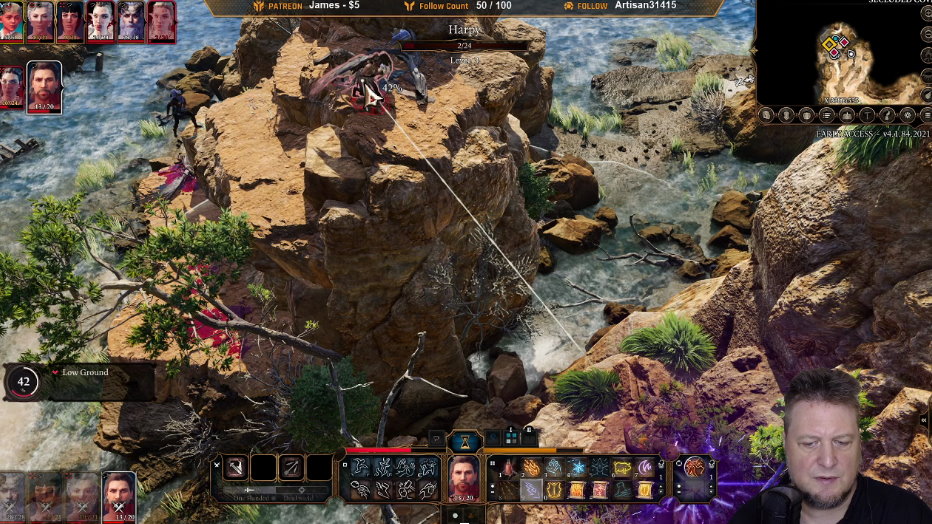
What’s not so great about Baldur’s Gate 3
Bugzilla attacks
It’s an early access game, and they mean it. This game is not finished and not yet polished. By my standards, it’s playable. The worst of the bugs for me tended to be animations gone haywire, but others have found game-ending bugs. There are also storyline elements that are clearly unresolved and unfinished (it is only about 1/3 of the planned game).
Camera control can be a problem sometimes. Many areas have 3-dimensional components to them and getting the camera so you can see what you want to shoot at, or figuring out just where a given monster is, much less targeting them can be a royal pain. Even outside of combat it can be very easy to overlook some trapdoor or secret treasure due to the complexity of the geometry and environmental detail.
There is quite a lot of junk inventory in the game. I expect this in MMOs and the like, but Baldur’s Gate somewhat encourages you with a huge range of stuff you can pick up, yet the vast majority of it is without purpose. They have a few clever ways to help you manage it all, but not clever enough in my opinion and mostly it felt like a drag sifting through all the detritus.
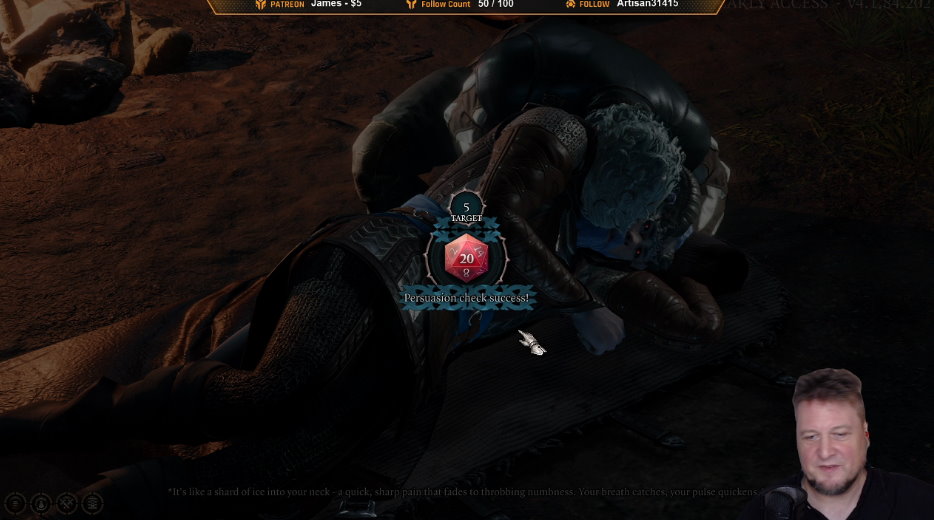
Dialog Woes
One feature I enjoy, but others may hate is the way dialog skill checks are handled. If you make a skill check in a dialog you commit to it before knowing exactly how difficult it will be. Once you commit, dice are rolled and you discover if you succeed or fail.
These dialog choices can be quite consequential, sometimes literally life and death, though usually not yours. And while occasionally they are a slam dunk, often they are more like a 50/50 chance of success.
This can feel like robbing you of player agency. You may well want to spare some poor goblin from a fight, but the dice can thwart your intent. That is unusual in this kind of computer game. It’s a little closer to the way tabletop games are played, though there, the GM has more flexibility in manipulating outcomes or offering second chances.
Personally, I liked this aspect and felt like it gave me a challenge to try and roll with the punches. I suspect I’ll be in the minority though, and most will feel compelled to save-scumm to get the outcome they were desired until the dice snatched it away from them. I think giving the player a more precise sense of their chances before they commit would help a lot here.
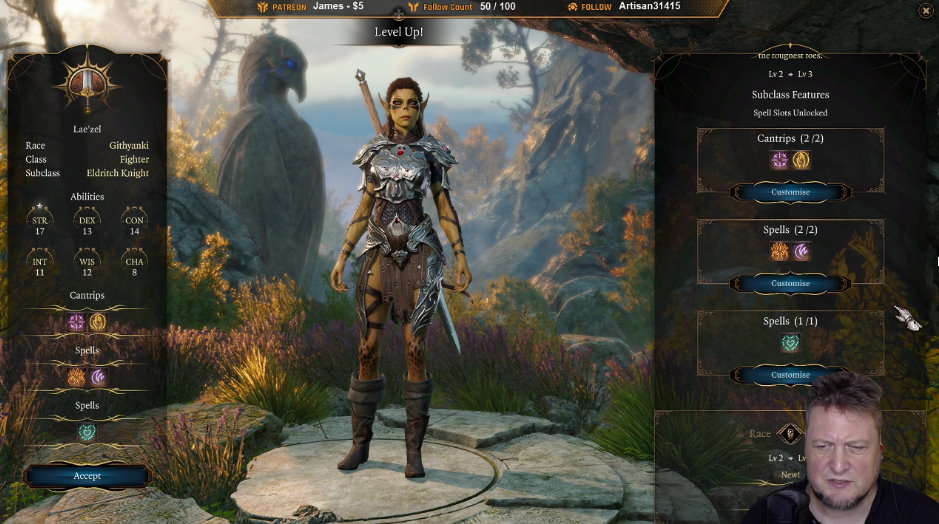
Story pitfalls
Finally, I’d point to a big challenge the game has walking a tightrope between a complicated plot/story, and a desire to be a kind of sandbox. On one playthrough, I decided to stonewall one of the more hostile party NPCs in an attempt to temper their arrogance, but the game took that as a total rejection of the NPC cutting off a whole slew of storylines. In another, one of the party NPCs died in a fight before I had the chance to recruit them. I didn’t even know it happened until a subsequent playthrough.
On one hand, this really feels like significant choice and consequence role-playing, but too often you don’t really understand the choice or the consequence until it’s far too late to change course.
Talking about camp
One of the more interesting features in BG3 is the way it handles party resting and the party camp. Like in D&D 5th edition characters can take a short rest or a long rest. In-game, a short rest is just a button you push to get back some health and abilities. It’s basically 10 minutes spent tending wounds and catching your breath.
A long rest takes place at the party’s camp. This is a specific off-map location where the party has set up a sort of permanent encampment. You can go there nearly any time during the game provided you are not in combat or in the immediate vicinity of hostile monsters. When you are finished in camp, you return to wherever you were before.
While adventuring, your party is limited to 4 members, but at camp every NPC you have recruited, and often a buch you haven’t are there hanging about. You can switch party members here, and you can engage in long conversations. You can also store your junk in camp using the barrels and chests put there for you, or ones you add yourself.
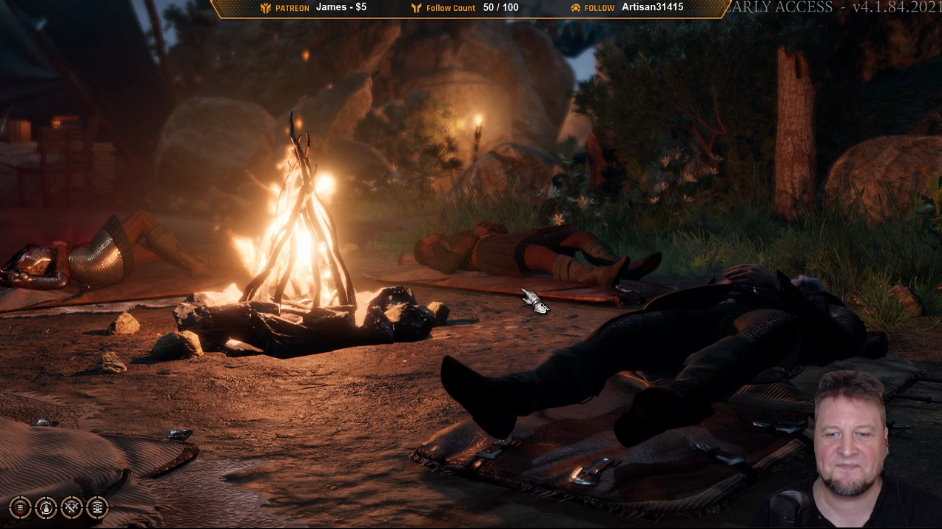
There are also many story encounters that take place in your camp, often as something of a surprise to the player. Camp is where most of the interpersonal relationships are hammered out between party members, but it’s also sometimes visited by outsiders who seek out your party for some reason.
All in all, I really like the camp. It adds some very interesting dynamics. In some ways, it feels more grounded that the characters have a safe base they go to. It does make you wonder, “how did they get to the camp from the 7th level of that dungeon and back again without going through all those traps?” So it also has some immersion-breaking qualities.
Sex and D&D
While sexuality is rife in the fantasy genre, it’s not seen much representation in official D&D licenced video games. That’s definitely not the case here. Your character can, if they choose, have a liaison with the other NPCs in your party. At one point you can even walk in on a steamy session between a couple of monsters in an abandoned barn. Character creation even has you designing your ideal love interest.
While I felt the opportunities for NPC romance was a bit awkwardly implemented, overall, I welcome the inclusion of sexuality in a licensed D&D game. It’s handled in a reasonably mature way, though it’s not especially nuanced. It shies away from actual nudity, focusing instead on the role sex plays in relationships and how it defines characters.
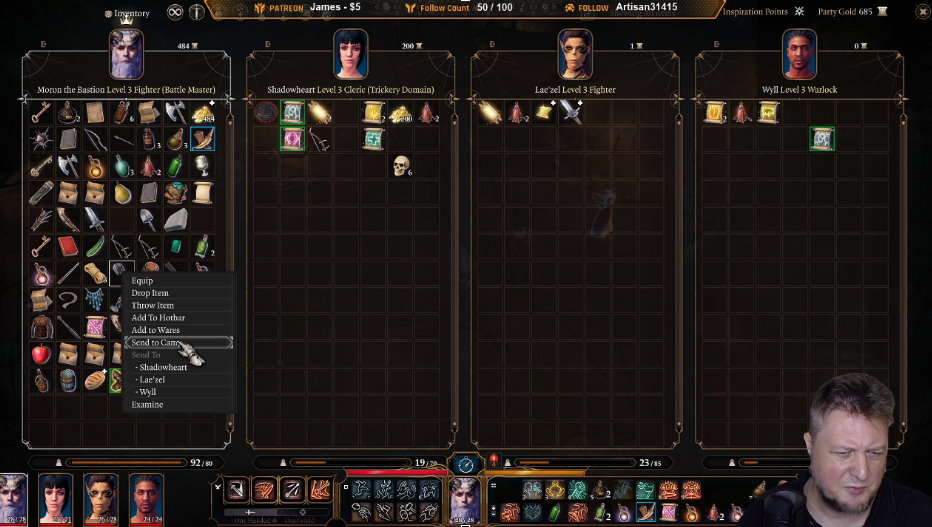
My Requests for Larrian
In the spirit of early access, here are some things I’d like to see changed or added to the game to try and make it just a little better and to my personal tastes.
1: Dialog System Options
I’d like to see a game setting that changes how dialog challenges work as follows. (personally, I like b. best)
a. Determinist mode: You only see dialog options your character is sufficiently skilled to have a better than 50% chance of success of, and when selected they automatically succeed.
b. Informed mode: You will see both your modifiers and the difficulty of the dialog options before you select them so you have a good understanding of the risk before choosing it.
c. Classic mode: Like it is now, you only know how good your character is at the skill you choose, but not how hard it will be to actually succeed.
2: Inventory changes
I’d love to see this game really make inventory management a pleasure rather than a chore. I’ve a number of suggestions.
The “send to camp” option is fairly brilliant. I love the idea you can mark things to either pick up later or send a runner to go stow it. But, once in camp, it’s a huge pain to sift through all that junk. It would be great if the items sent were auto sorted and put in some appropriate place. Books go to a bookshelf or the book stacks you find in camp. Crafting ingredients go to a crafting station. Food goes to a pantry and so on.
Furthermore, the interface for these places should be better than just scrolling through a barrel. Currently everything gets dumped into one box in camp. You have to scroll through it looking for what you want, and every time you take something it scrolls back to the top. This makes using it a chore. Instead, I’d like to see these camp containers have a nice item listing more like a small spreadsheet with icon, name, weight, value, listed and sortable with multi-select and seach.
Now for the looting screens. I’d love to see loot items sorted so that quest items appear first and are highlighted in some way, then the rest is sorted by value. Finally, a “send all to camp” button should be standard on all of them. Its only exception is it won’t send to camp any item key to the current location you are exploring.
Finally, let’s talk about magic bags. Right now if someone dies you get some dialog about magic bags and how it teleports their key items to you. That’s not a bad justification, but I think you can do one better. You could have an early story moment where the main character actually gets a set of magic packs that can access each other’s stored goods. Then you can simply have any character access any other character’s pack inventory at any time, be they dead or alive, in the party or not. It also justifies the otherwise immersion-breaking act of grabbing potions from one another’s packs in the middle of a fight no matter where those characters happen to be.
3. Dealing with the dead
I ran into many difficult and strange situations due to the way death is handled in the game. I think a few changes could make this a bit more manageable.
First of all, I think there should be a “send body to camp” option for your dead comrades. When you have a fallen party member but no way to raise them, you end up having to leave them where they fell. It’s a bit inconsistent if they will show up in camp or not later, and the way they just lie in a pool of blood next to their tent is quite strange.
The camp could well have a place for the dead to rest, likely tended by the skeleton chap who takes up residence there and raises the dead for the party. You could even choose to bury them if you hate them rather than pay for resurrection. Oh, and the ferryman has trouble raising characters that are not currently in the party.
For immersion, Mr. Skeleton could also make some show of being the party that transports dead characters to camp and cares for them. It’s not unusual in the game for characters to die from falling off a cliff into a river or bottomless pit. The first time it happened I was wondering how the game would deal with it, but they just mysteriously arrive at their tent as a corpse. Mr. Skel could have some dialog about recovering them in these circumstances.
4. Let us lie more
One of my characters was a bard who, in my mind, was a big liar. Many of the quests in the game don’t deal with this well. For instance. When heading to the Goblin camp I did my best to talk my way inside. And that included making (in my mind) empty promises to help them attack the druids. But once I’d said it, any time I went to the refugee camp, everyone was hostile to me, even though I’d since assassinated nearly all the Goblin’s leadership.
I think if more situations could be nuanced so that it’s possible for the characters to lie, that would create more immersive storytelling and role-playing agency. It needn’t always require a deception check, it can just be handled with more open-ended scripting. I’d love to go to the ambush and then double-cross the side I show up with or the like as combat starts. Save the actual commitment to the last possible moment. The game treats our word as our bond a little too often.
5. Tone down the environmental effects and barrel tossing antics
I love the interactive environments in the game but not every fight needs to be awash with fire, smoke, blood slicks, and so on. Let us introduce those elements where we like, and have them in place where appropriate, but it feels like this game is just awash in napalm sometimes.
Also, the distance to which huge barrels of oil can be thrown about is a bit immersion breaking sometimes. It would make more sense to be tossing bottles of the stuff rather than barrels unless characters are sporting giant strength and the like.
Ratings 1-5
- Craftsmanship: (Early access)
- Production: 5
- Gameplay: 4
- Innovation: 3
Sorry, the comment form is closed at this time.

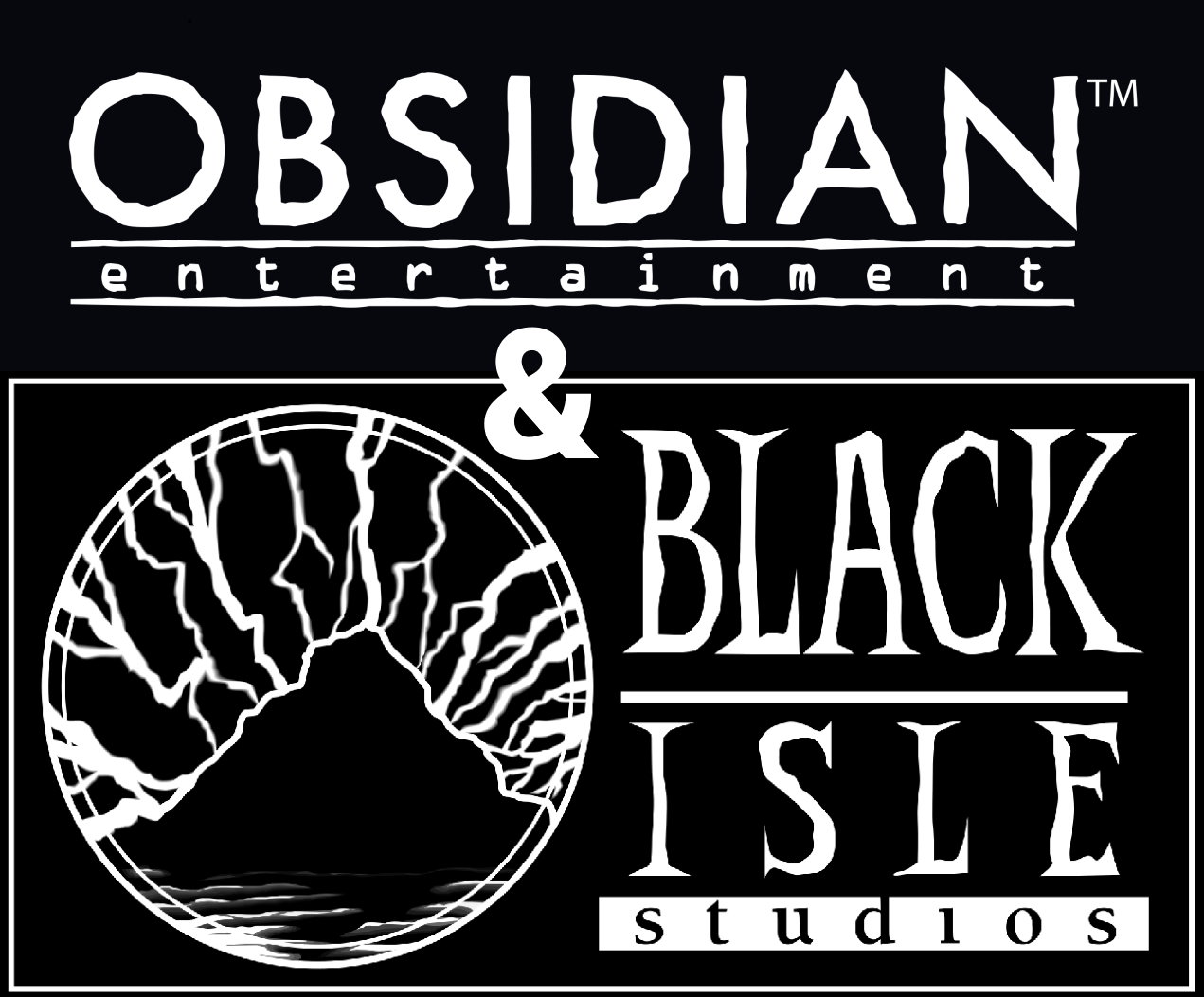
James Thomas
Thanks for this review Sig. Having played BG back in the day, your article really helps me get what gameplay would be like.
What are the system requirements?
Sigfried Trent
Hi James! Sorry for the slow response, I came down sick last week. Better now but it was fairly awful.
Here are the recommended requirements…
Requires a 64-bit processor and operating system
OS: Windows 10
Processor: Intel Core i7-4790 or AMD Ryzen 3 3200G
Memory: 12 GB RAM
Graphics: GTX 1060 6GB / GTX 1660 Super or Radeon RX 590
DirectX: Version 12
Storage: 70 GB available space
Additional Notes: SSD recommended
Curiously, that’s exactly the specs on my laptop and it does run pretty darn well on it. I hear it’s a dog on PS4/Xbox One. They also have it on Stadia and with that you can run it on just about anything.
I’m not sure I recommend the game though… There are some things I like, but overall, I can think of a lot of similar games I like better. I was mostly excited because Witcher 3 is one of my all-time favorites.